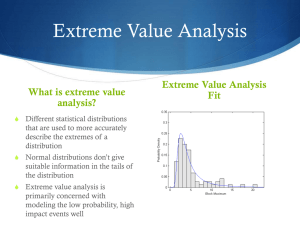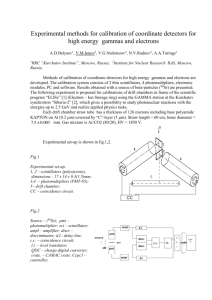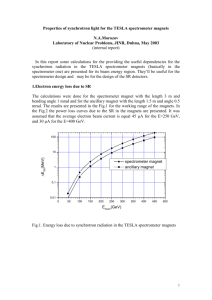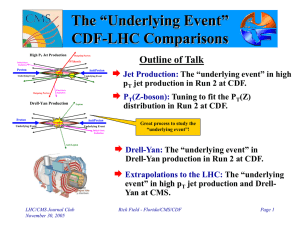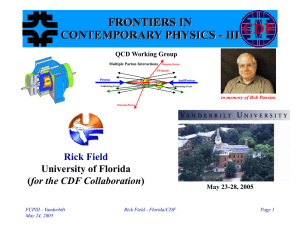The constant term is an important issue however we
advertisement
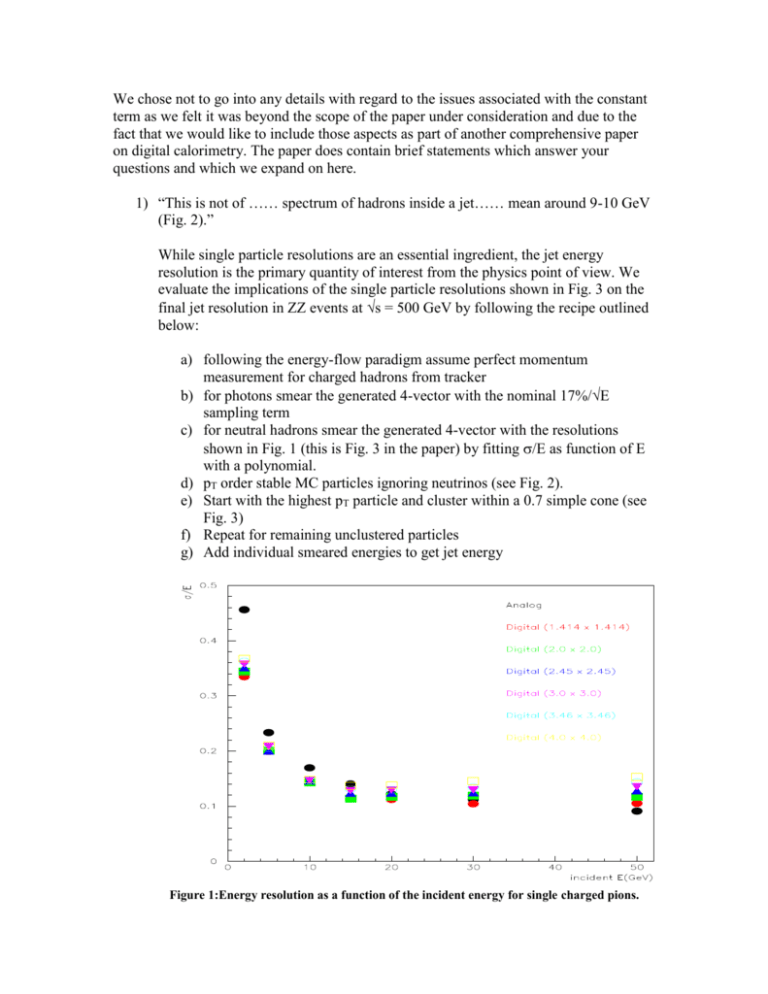
We chose not to go into any details with regard to the issues associated with the constant term as we felt it was beyond the scope of the paper under consideration and due to the fact that we would like to include those aspects as part of another comprehensive paper on digital calorimetry. The paper does contain brief statements which answer your questions and which we expand on here. 1) “This is not of …… spectrum of hadrons inside a jet…… mean around 9-10 GeV (Fig. 2).” While single particle resolutions are an essential ingredient, the jet energy resolution is the primary quantity of interest from the physics point of view. We evaluate the implications of the single particle resolutions shown in Fig. 3 on the final jet resolution in ZZ events at s = 500 GeV by following the recipe outlined below: a) following the energy-flow paradigm assume perfect momentum measurement for charged hadrons from tracker b) for photons smear the generated 4-vector with the nominal 17%/E sampling term c) for neutral hadrons smear the generated 4-vector with the resolutions shown in Fig. 1 (this is Fig. 3 in the paper) by fitting /E as function of E with a polynomial. d) pT order stable MC particles ignoring neutrinos (see Fig. 2). e) Start with the highest pT particle and cluster within a 0.7 simple cone (see Fig. 3) f) Repeat for remaining unclustered particles g) Add individual smeared energies to get jet energy Figure 1:Energy resolution as a function of the incident energy for single charged pions. Figure 2: Stable MC particles in ZZ events at s = 500 GeV. Figure 3: Fraction of energy carried by neutral hadrons (top, ~ 11%) and photons (bottom, ~ 24%) in 0.7 simple cone jets. The smeared jet energies are compared to the corresponding unsmeared jets to estimate the resultant energy resolution. Fig. 4 shows the /E as a function of the generated jet energy using the analog and digital parameterization of the single particle resolutions for 3cm x 3cm cells. Figure 4: Energy resolution of 0.7 cone jets in ZZ events as a function of the generated (unsmeared) jet energy. As can be seen from Fig. 4 the ‘digital’ resolutions are competitive with analog resolutions even for high energy jets with the rising constant term seen in Fig. 1 not making any significant impact on the resultant jet resolutions. 2) “Simulations indicate that……using multiple thresholds…..instance).” Simulations clearly indicate that for cell sizes we are considering (3 cm x 3 cm) semidigital (two bits or three thresholds) readout, instead of the digital (one bit or single threshold) readout discussed above, can redress the concerns associated with the degradation of resolution at the high energy end of the single particle spectrum. Let us start by revisiting the problem. Fig. 5 and 6 show the (E)/E and (N)/N plots for 10 and 50 GeV charged pions respectively. While cell counting works very well for the 10 GeV sample, Fig. 6 clearly shows that by 50 GeV it is definitely performing worse than the analog measurement. The reason for this is the fluctuations in the electromagnetic content of hadron showers (see Fig. 7). Fig. 7 shows the total number of cells above a minimal threshold (taken here to be 0.25 MIP) for 10 and 50 GeV charged pions as a function of the fraction of the shower energy deposited in cells with energy greater than 10 MIPs (or roughly as a function of the amount of energy of the hadron shower being deposited mainly through s). As is well known the fraction of energy being deposited by electromagnetic means and hence its fluctuations increases with the hadron momentum leading to a larger spread in the number of cells E=0.183 N=0.166 Figure 5: Distributions of live energy (left) and number of cells above threshold (right) for 10 GeV charged pions. E=0.101 N=0.153 Figure 6: Distributions of live energy (left) and number of cells above threshold (right) for 50 GeV charged pions. Figure 7: Total number of cells above a minimal threshold of 0.25 MIP as a function of the energy fraction contained in cells with energy greater than 10 MIPs for 10 GeV (left) and 50 GeV (right) charged pions. above threshold for the 50 GeV sample. This can be clearly seen by comparing the 2d distributions for 10 and 50 GeV shown in Fig. 7. Improving the resolution at the high end thus amounts to changing the slope of the 50 GeV distribution so as to make the “no. of hits above 0.25MIP” independent of “fraction of energy deposited in cells with E>10MIP”. This can be achieved if there are multiple thresholds available. By attaching a threshold dependent weight to each cell the slope change can be accomplished. Simply put a cell may be counted more than once depending on the threshold it passes. For the purposes of our simulation studies we used three (equivalent to a two-bit readout) thresholds. The thresholds were placed at (this has not fully been optimized) at 0.25, 10 and 20 MIPs. We arbitrarily chose the weight to be assigned to the cells to be 2n where n goes from 0 to 2. Thus a cell passing a threshold of 0.25 MIP was counted once, that passing 10 MIP twice and the one above 20 MIP four times. The results of the cell no. distribution and the resultant resolution using this ‘semi-digital treatment’ can be seen in Fig. 8. It can be concluded from Fig. 8 that with multiple thresholds (3 in our case) the competitiveness of the (semi)digital treatment can be maintained even at high energies thus eliminating concerns related to the prospect of an increasing constant term. E=0.101 E=0.092 Figure 8: Distributions of live energy (left) and number of cells above threshold (right) for 50 GeV charged pions. The “semi-digital” treatment has been applied to the number of cells distribution.







